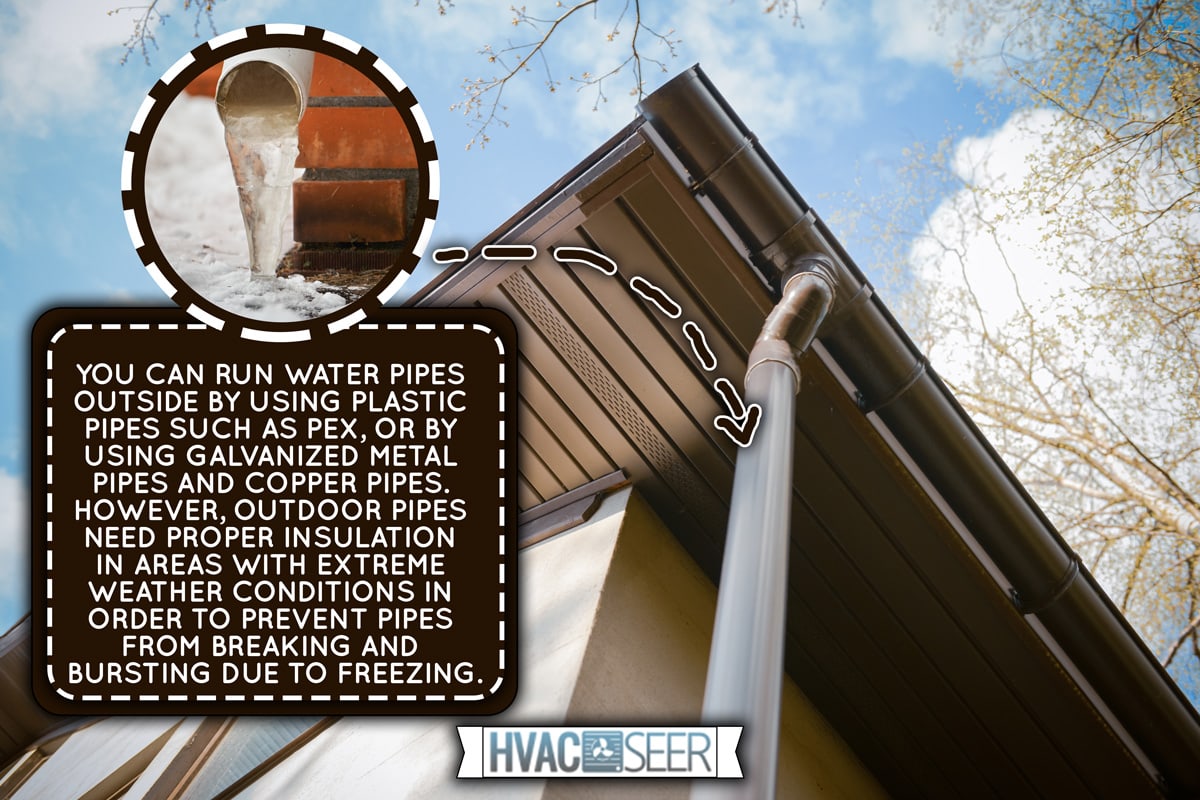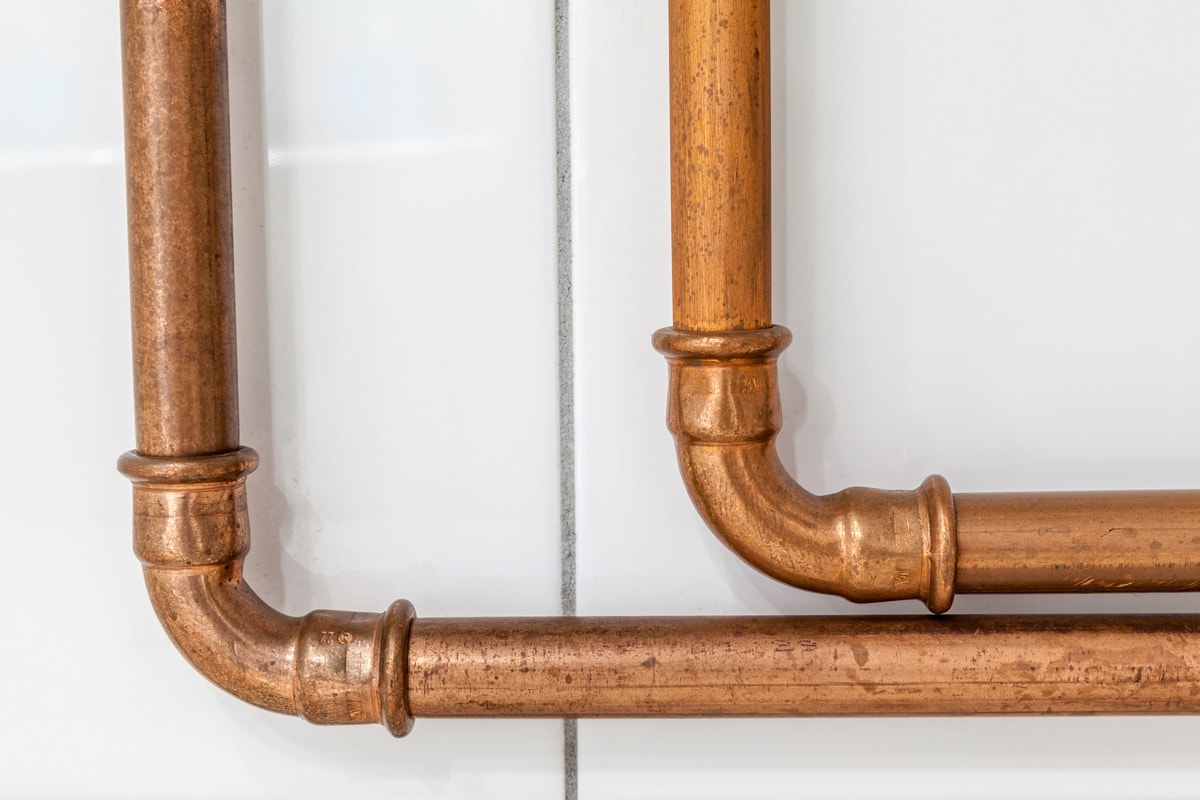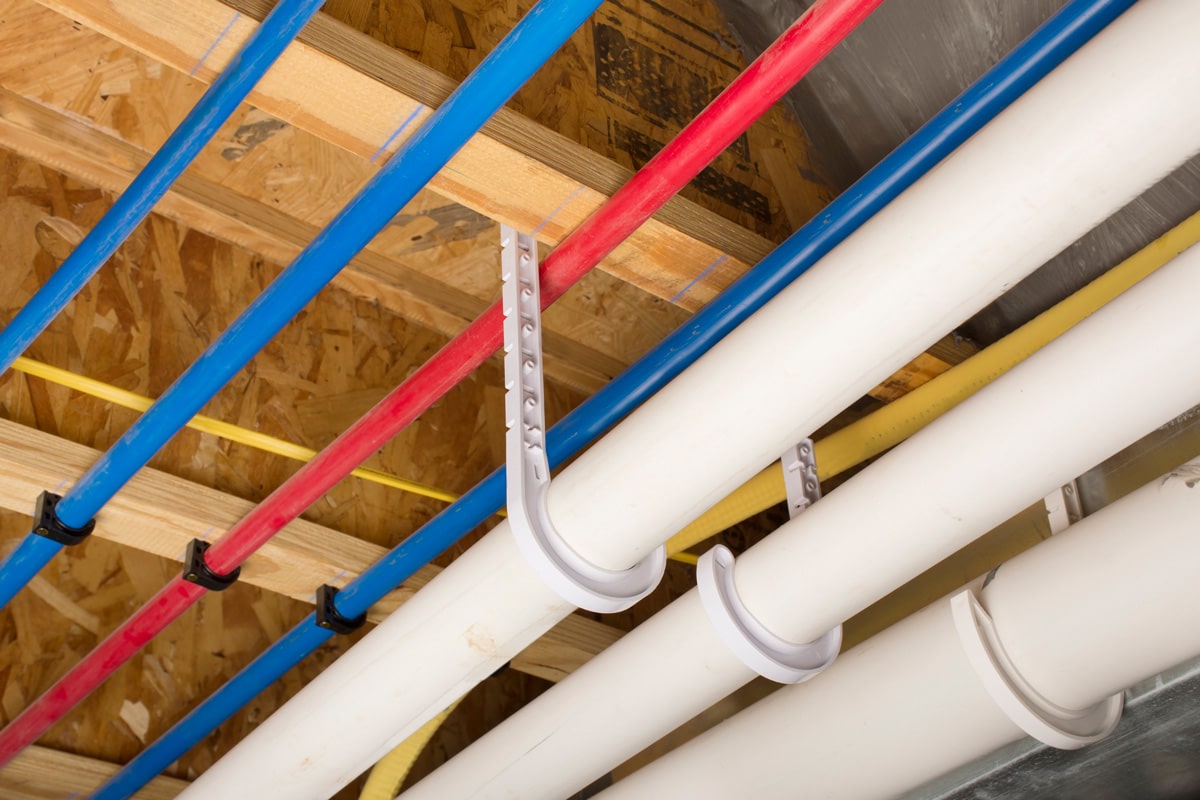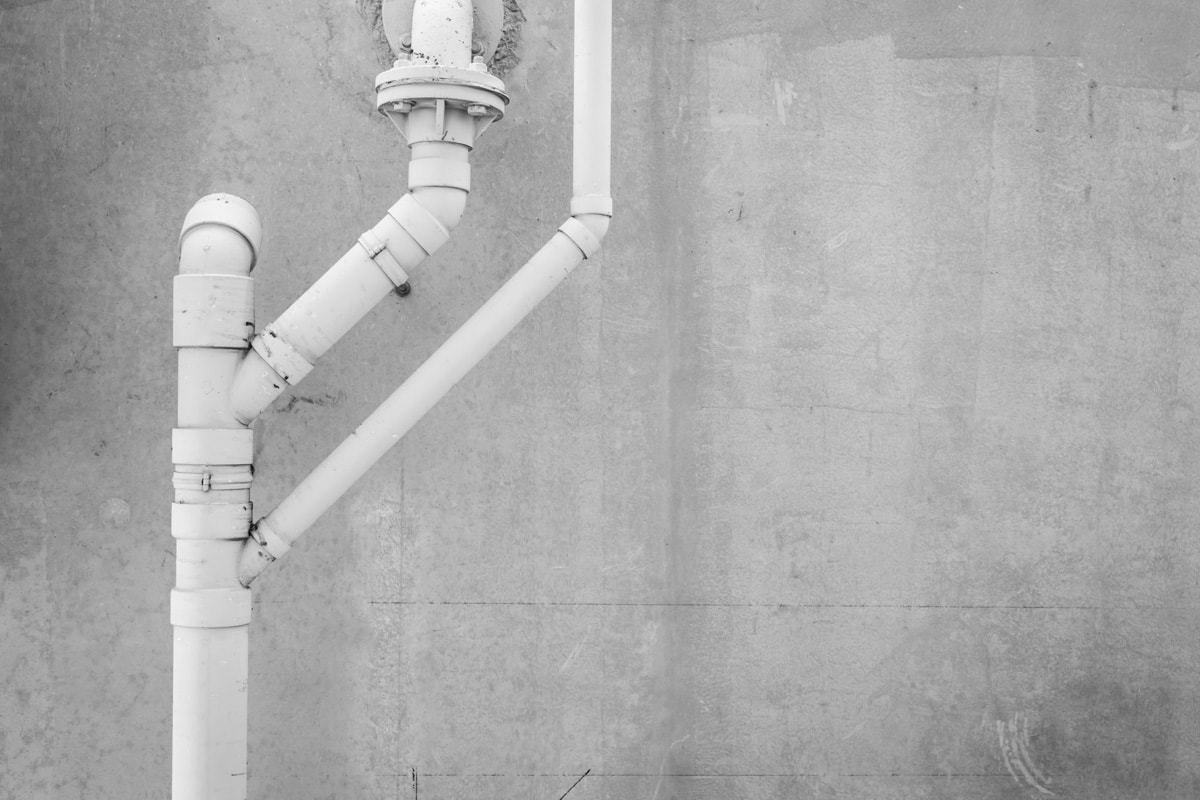Having a proper water line provides a safe and continuous supply of water in the household. Be it for drinking water or other uses, correct plumbing is a major must-have. But what if there is no other way for you to install your water pipes but from the outside? We have gathered the information that you need to help you run pipes outside.
You can run water pipes outside by using plastic pipes such as PEX, or by using galvanized metal pipes and copper pipes. However, outdoor pipes need proper insulation in areas with extreme weather conditions in order to prevent pipes from breaking and bursting due to freezing.
There are different types of water pipes to choose from, and sometimes it's confusing when you don't know which one would fit your preference. Don't worry because we will get into further details about each of the options and go through step-by-step guides on how to run water pipes outside so stick until the end of this post to learn more.

How To Run Water Pipes Outside?
According to local codes, it is a must to have a water line outside to ensure a proper plumbing operation system. Although there are various types of pipes that are used in plumbing systems, not all plumbing options can be used for water lines.
Here are the types of pipes you can safely use as water pipes if you're planning to run the water lines outside.
Galvanized Metal Pipes

Often used for construction purposes, a galvanized metal pipe is a relatively durable type of metal that's coated with a protective layer of zinc that prevents it from rusting and corrosion. Not only is it extremely strong, but it can last up to 80-100 years.
Since galvanized pipes can last longer than any other type of pipe, their durability and protective zinc coating make it possible to be installed underground. Depending on the thickness of its protective zinc coating and the soil condition, galvanized pipes can last underground for 35-75 years.
Although galvanized pipes are soaked in a protective zinc coating, once the layer of zinc gets stripped off, the pipe is still prone to rust.
See this galvanized metal pipe on Amazon.
If you are planning to use galvanized metal pipes for your outdoor water line, here is a step-by-step guide on how to install them:
1. Measure and Cut
A galvanized metal pipe has a standard length of 21 feet. Before installing the pipes, make sure that you have the correct measurement for every pipe that you will need.
Using a pipe cutter with a rotary cutting wheel, apply an ample amount of cutting oil and cut the pipes depending on the length that you need. Do not forget to use protective gloves when doing this process.
2. Deburr
After cutting the pipes to your desired measurement, smoothen the edges and the interior side of the pipe to get rid of sharp ridges. Use a die cutter with the correct diameter and some cutting oil to thread the end of the pipe.
3. Fitting The Pipes
Fittings made of malleable cast iron are treated to link galvanized metal pipes. Using a Teflon tape and a pipe joint compound, attach the pipes and the fitting to each other. Open the waterline to see if there's any leak when water is passing through the elbow. If there is, adjust and tighten the fitting until the leaking stops.
4. Hang The Pipes
If the pipes need to go vertically or along a floor joist, use pipe hangers every 6-8 feet long. Avoid tightening of joints when hanging pipes to prevent the other end from loosening its grip to the connecting joint.
5. Testing The Water Line
Test the water line and check for any leakage. If one part needs to be fixed, you have to tear apart the leaking parts to do so.
Copper Pipes

Because of its lightweight, durability, and fire-resistant features, copper pipes have been used for several years in households. In addition, Copper is safe for the environment and is good for drinking water lines since it's non-corrosive.
Unlike galvanized metal pipes, Copper pipes can be bent to follow obstructions, making them easier to be installed. Not only that, Copper pipes can last up to 70-80 years which makes them a good choice for the plumbing system.
Check out this Copper pipe on Amazon.
If you are planning to use Copper pipes for your water line, here is a step-by-step guide that you can follow.
1. Cutting The Pipes
Using a hacksaw, cut the pipes to your desired length. A miter box can help hold the pipes in place so that cutting can be done easier. Be careful when working with thin types of Copper pipes so the edges will not get damaged. Clean the edges with an emery cloth or steel wool until shiny after cutting.
2. Connecting The Pipes
Using elbows and other types of fittings depending on what you need, connect the Copper pipes. Make sure that the insides of the fitting are cleaned as well as the tubes.
Polish the joint and the end of the pipe with steel wool until both are shiny. Once done, apply an ample amount of non-corrosive soldering flux on the areas of the joint and tube you polished. This should be done on the inside and outside areas of the tube and the fitting.
Connect the joint and tube and twist it several times to make sure that the flux gets evenly spread.
3. Soldering
Heat the joints using a gasoline blowtorch or an air-acetylene torch. Some joints have a small hole where you can insert the wire solder once the joint is heated up. If your fitting doesn't have such a feature, you can apply the solder around the edges of the joint.
You will see a solder ring around the edges of the fitting once the soldering is successfully done to seal the connection.
Cross-Linked Polyethylene (PEX)

Cross-linked polyethylene or PEX is a good substitute for Copper pipes. It is a high-density type of polyethylene classified as a variation of plastic tubing and is known as one of the newest addition to the water pipes choices.
Known as the most advanced piping material to this day, PEX is not only non-corrosive and durable but can also last up to 50 years.
Although PEX is a lightweight material, it can withstand a pressure level of up to 200 degrees Fahrenheit. It can also be bent around which makes it easier to work with that's why most water plumbing systems are switching to PEX.
Click here to see this PEX pipe on Amazon.
Here is a step-by-step guide that you can follow if you are planning to use PEX for your water system.
1. Planning and Cutting
Create a plan on how you would like the water system will be. This will help you decide how long you have to cut your PEX pipes.
You can also use manifolds when installing the pipes. It will allow you to shut off the water connections in some areas of the household.
2. Preparing The Materials
PEX does not require soldering or glue, but you will need fitting and clamps or crimp rings to seal the joints. Once you have all the materials needed, you can begin the installation process.
3. Install The Pipes
Connect the pipes using joints then use the clamps to seal the connection. If you are running the pipes horizontally, the pipes need to be supported every 32 inches, and every 4-6 feet when installed vertically.
You can use plastic or metal straps as support, but do not fit the straps too tightly. Leave enough space for the pipe to allow it to expand and contract.
4. Testing The Water Line
Once installation is done, open the water line and check for possible leaks. If leakage is found, tighten the clamp or crimp ring until the leaking stops.
Can I Use PVC Instead of PEX For My Water Line?

Although PVC can be an option for water lines, it is not recommended to be used for potable water systems because when PVC is exposed to heat or high temperature, the plastic pipes become crispy or soft.
Despite it being resistant to corrosion, once exposed to heat, it releases chemical compounds in the running water that can be harmful to the body.
Unlike PVC, PEX is known to be thermally resistant, making it a good choice for a water plumbing system even if you have to run your pipelines outside where they can be exposed to sunlight. Blue PEX pipes can be used for cold running water while red PEX pipes are good for hot water.
Wrapping Up
You can take into consideration the properties of each pipe option we have given above to help you decide. Just don't forget that health should always be your utmost priority when choosing the perfect type of pipes for your water system.
Before you go, don't forget to check out these posts, too!



